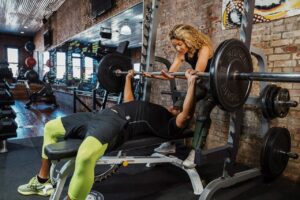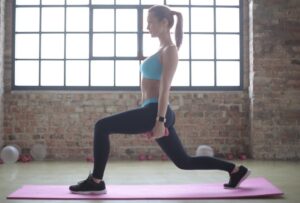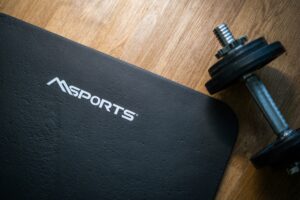The gluteal muscles, also known as the glutes, are three muscles: the gluteus maximus, medius, and minimus.
Together, these muscles make up the buttocks and play a crucial role in hip extension, stability, pelvic alignment, spinal health, power production, and much more.
The gluteus maximus is the largest and most powerful muscle in the entire body. Its primary functions are hip extension (driving the hips forward) and outward thigh and knee rotation (1).
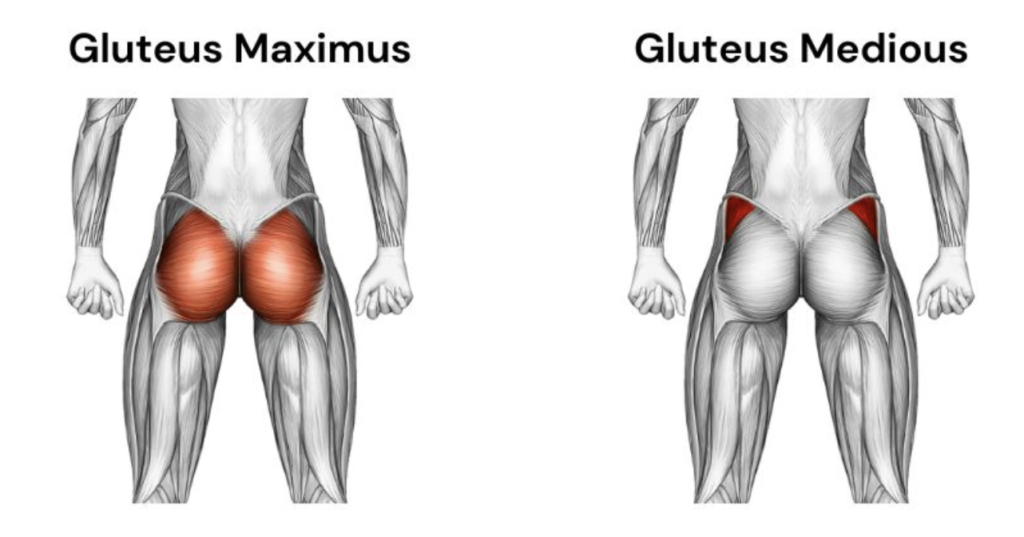
In contrast, the gluteus minimus and medius are much smaller and serve secondary roles in pelvic stability, spinal alignment, leg abduction (lifting your legs laterally), and more (1, 2).
Developing all three muscle groups requires a variety of exercises that allow you to load the region in unique ways and from several angles.
Let’s discuss the two primary types of exercises and review the best isolation and compound glute exercises.
Compound vs. Isolation Exercises
Compound exercises involve two or more muscle groups and work around several joints.
The conventional deadlift often deemed one of the best compound glute exercises, trains the glutes through hip extension (3). It also works the calves, hamstrings, entire back, shoulders, arms, and midsection. The joints with an active role are the ankles, knees, hips, and shoulders.
In contrast, isolation movements focus on one muscle group and involve a single joint. One of the best glute isolation exercises is the cable glute kickback. It primarily trains the glutes and involves one joint: the hip.
Try the Hevy app to log and track your isolation and compound glute exercises.
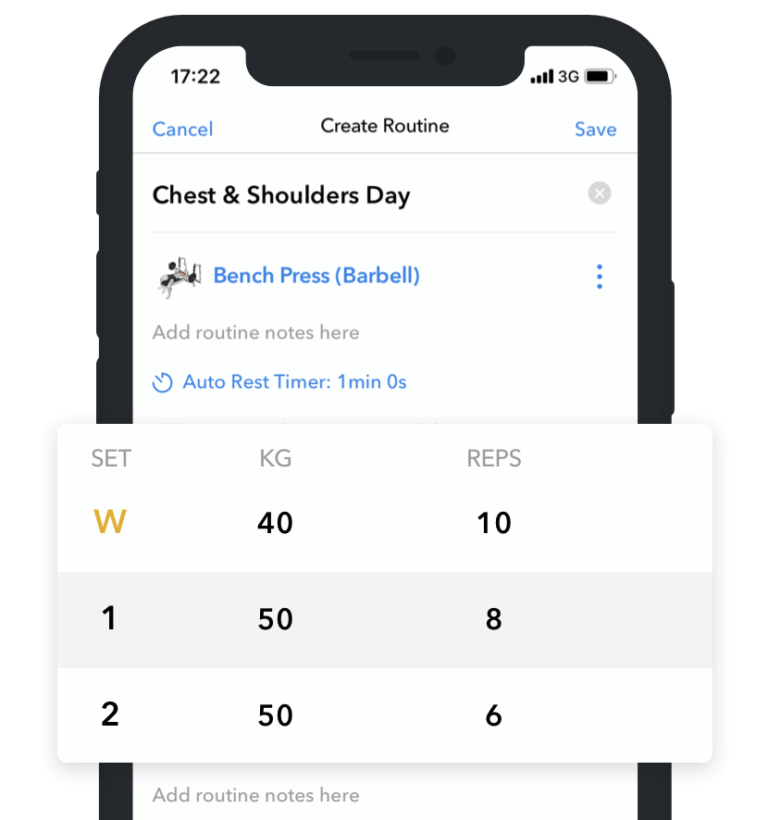
Hevy – Workout Tracker







Hevy – Workout Tracker
Create your glute workout with Hevy, and track your progress
Compound Glute Exercises vs. Isolation Activities
You should prioritize compound exercises over isolation movements. Multi-joint activities are much more challenging to perform, and the risk of technique breakdown is higher.
Doing compound lifts early in your training allows you to maintain proper technique, perform better, and create the necessary overload for muscle growth and strength gain (4).
Isolation exercises are also helpful, and you should include them in your training but save them for later in your workouts. Single-joint activities are more accessible, and the risk of poor technique is small, even if you’re tired.
For example, if you want to have a glute-focused workout consisting of barbell hip thrusts, step-ups, and donkey kicks, do them in the following order:
- Barbell hip thrust
- Step-ups
- Donkey kicks
Hip thrusts are the most challenging, and trainees generally go heavy. Step-ups are also difficult, but you can use light dumbbells and do up to 10, 12, or 15 reps per leg. In contrast, donkey kicks are an isolation exercise you can do to finish your workout.
Still, how you sequence exercises will mostly come down to how you organize your weekly training. Let’s go over two relatively common scenarios:
Scenario 1: 4-Day Upper/Lower Split
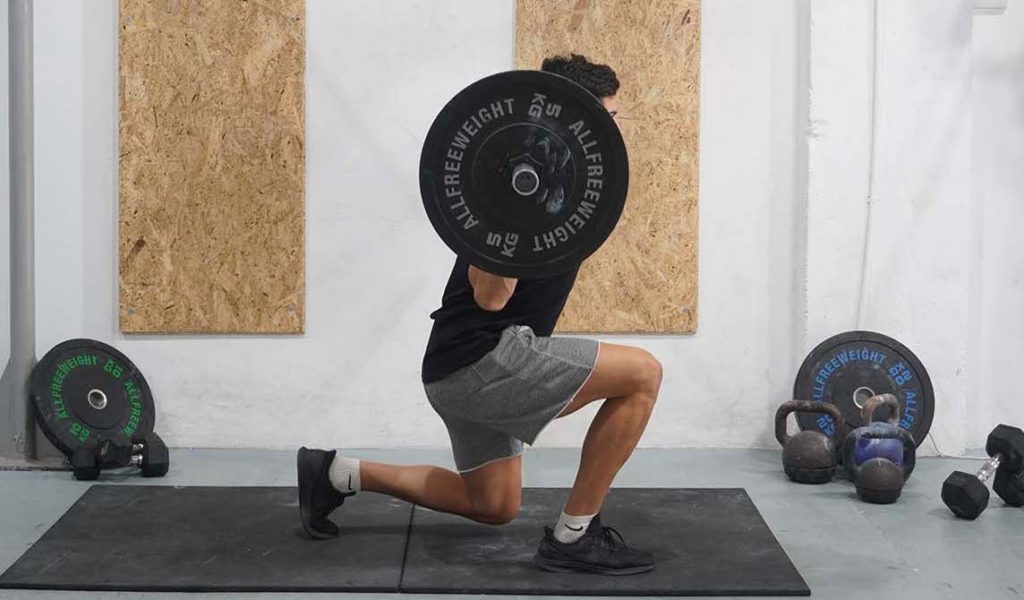

The upper/lower split is where you divide your training into two workouts: upper and lower body. Working out four times weekly would mean having two upper and two lower sessions.
In such a case, you can have one leg-focused workout and one glute-focused session. For instance:
Monday – Upper A
Tuesday – Lower A (quads, hamstrings, and calves)
Wednesday – Off
Thursday – Upper B
Friday – Lower B (glute-focused)
The Lower A workout would focus on barbell squats, leg presses, lunges, Romanian deadlifts, leg curls, leg extensions, calf raises, and similar. You can throw one or two glute isolation exercises into the mix.
Here’s how it might look:
| Lower A (quads, hamstrings, and calves) | ||
| Exercise | Sets | Reps |
| Squat (Barbell) | 3-4 | 5 to 8 |
| Romanian Deadlifts (Dumbbell) | 3 | 8 to 12 |
| Leg Press (Machine) | 3 | 10 to 15 |
| Lying Leg Curl (Machine) | 3 | 12 to 20 |
| Glute Kickback (Machine) | 3 | 12 to 20 |
| Seated Calf Raise | 3 | 10 to 20 |
Now, here is the glute-focused session:
| Lower B (glute-focused) | ||
| Exercise | Sets | Reps |
| Hip Thrust (Barbell) | 3 | 5 to 10 |
| Reverse Hyperextension | 3 | 8 to 12 |
| Cable Pull Through | 3 | 12 to 15 |
| Leg Extension (Machine) | 3 | 12 to 20 |
| Clamshell | 3 | 15 to 30 |
| Calf Press (Machine) | 3 | 15 to 25 |
Related article: Best Leg Workout and Exercises for a Strong Lower Body
Scenario 2: Push/Pull/Legs Split
A push/pull/legs split is another popular approach for organizing a person’s weekly training.
In such a case, having three weekly workouts would mean training the lower body once per week. Here, it would be best to combine activities for the glutes, quadriceps, hamstrings, and calves, sequencing them based on difficulty.
For example:
| Lower Body Workout (glutes, quadriceps, hamstrings, and calves) | ||
| Exercise | Sets | Reps |
| Squat (Barbell) | 3 | 5 to 8 |
| Hip Thrust (Barbell) | 3 | 6 to 10 |
| Romanian Deadlift (Dumbbell) | 3 | 8 to 12 |
| Reverse Hyperextension | 3 | 10 to 12 |
| Leg Extension (Machine) | 2-3 | 12 to 15 |
| Cable Pull Through | 2-3 | 12 to 15 |
| Lying Leg Curl (Machine) | 2-3 | 12 to 20 |
| Seated Calf Raise | 2-3 | 15 to 20 |
The primary issue here is that you’re doing a lot of work in one session, which can be exhausting. Luckily, you’re only training your legs once per week, which gives you plenty of time to recover.
People following a 6-day push/pull/legs split can have two lower body workouts, which would allow a split similar to the one we covered in the previous point (Lower A and Lower B).
List of 9 Glute Compound Exercises
1. Hip Thrust (Barbell)
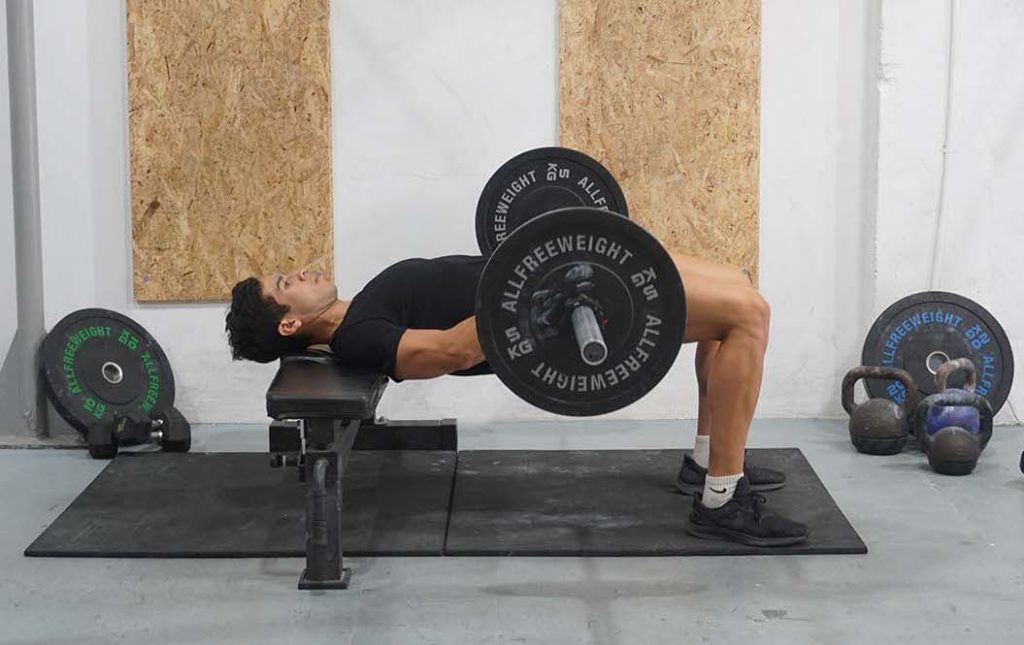

Barbell hip thrusts are one of the best compound glute exercises (5).
The objective is to sit on the floor, position your upper back against a flat gym bench, and have a barbell against the crease of your hips. Once in position, engage your glutes to drive your hips toward the ceiling.
Hip thrusts are incredibly simple, the risk of making errors is small, and the overloading potential is excellent.
Despite being a compound exercise, hip thrusts mainly emphasize the buttocks and promote muscle growth.
Related article: 10 Exercises to Turn Your Square Butt into a Round Behind
2. Glute Bridge
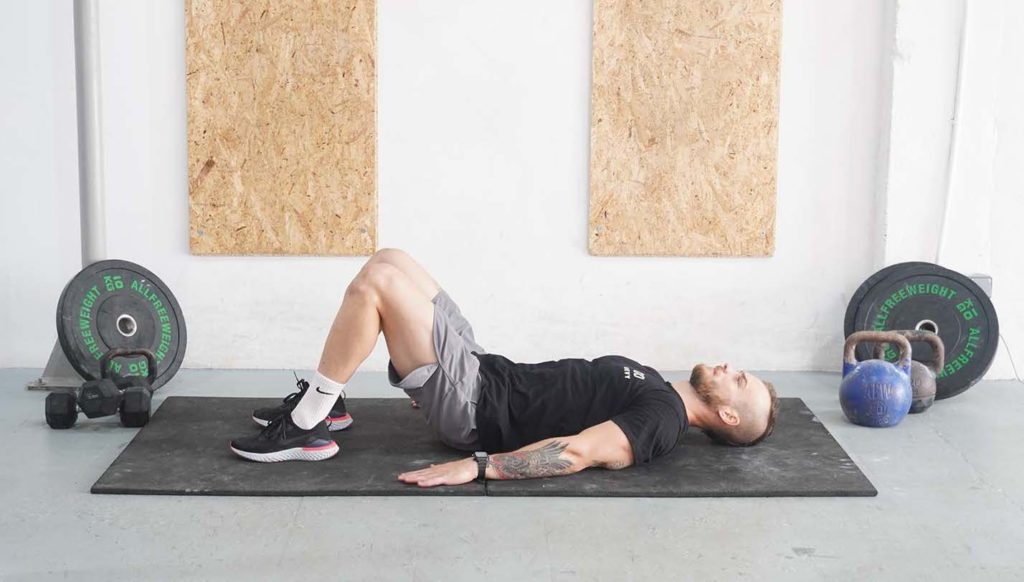

Glute bridges are similar to the hip thrust apart from two differences:
First, you must lie on the floor instead of having your upper back against a bench. Second, glute bridges are traditionally performed without external weight and are more suited for beginners.
The objective is to get down on the floor, have your feet flat, and squeeze your glutes to drive your hips up.
You can make the exercise more challenging by having one foot on the ground at a time. Doing so will increase the resistance and allow you to develop both sides more evenly (6).
3. Romanian Deadlift (Barbell, Dumbbell)
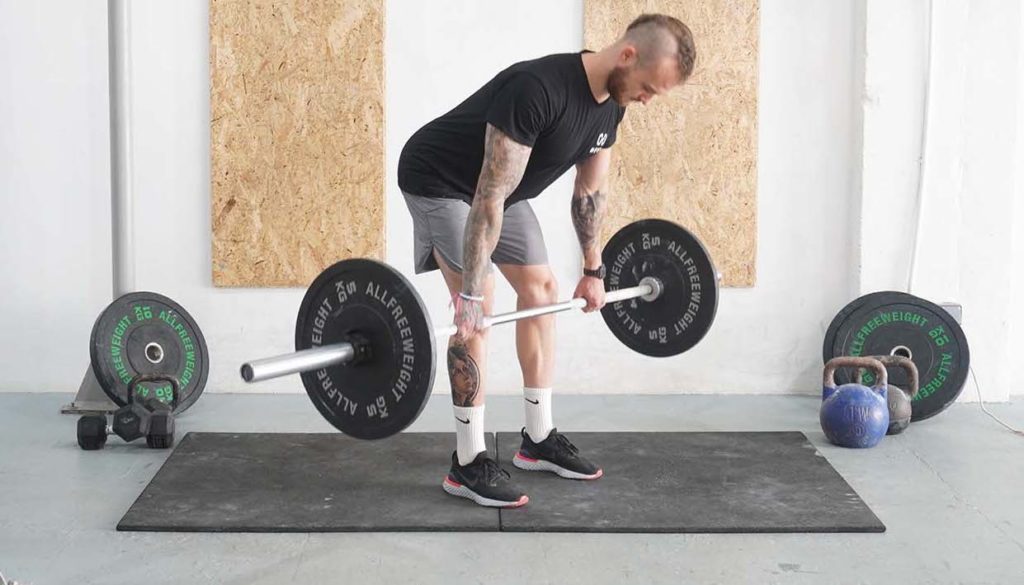

Romanian deadlifts are another excellent compound activity for the posterior chain: glutes, hamstrings, and back (3).
Unlike a traditional deadlift, where you start from the floor, Romanian deadlifts have you start from the top down.
You begin in an upright position and slowly hinge your hips to lean forward until you feel a stretch in your posterior muscles. From there, straighten your body and squeeze your glutes at the top.
Dumbbells and barbells are viable options for loading the exercise.
4. Good Morning (Barbell)
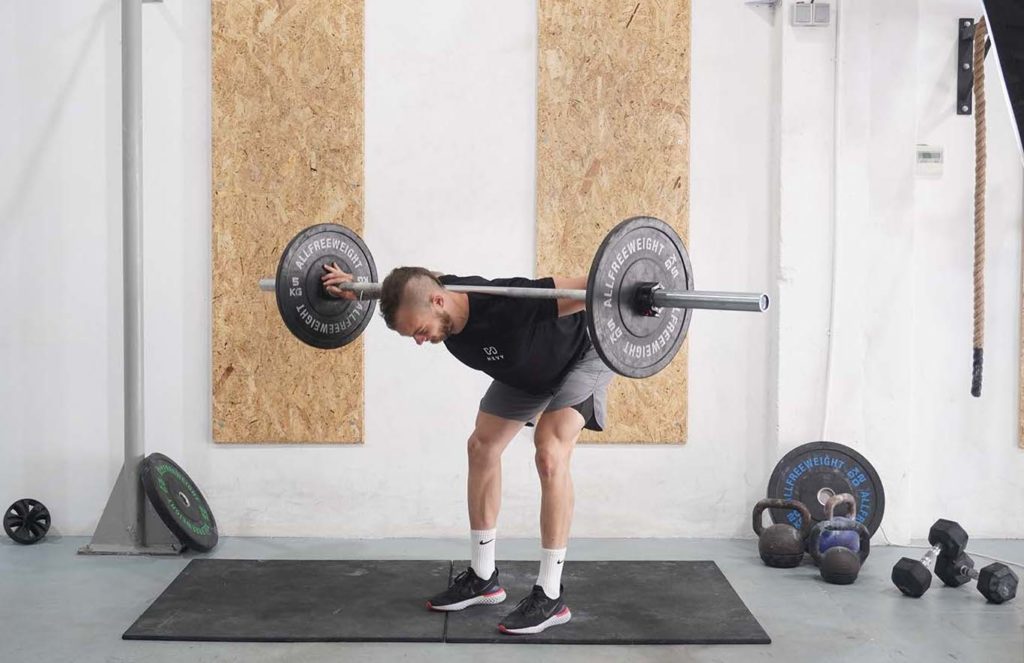

Good mornings are a similar movement to the Romanian deadlift. Both exercises feature similar movement mechanics and ranges of motion.
The primary difference is that you must have the barbell on your upper back during good mornings instead of holding it in front of you.
Good mornings provide mechanical tension for your hamstrings, glutes, and lower back, forcing growth and strength development (7).
5. Sumo Deadlift
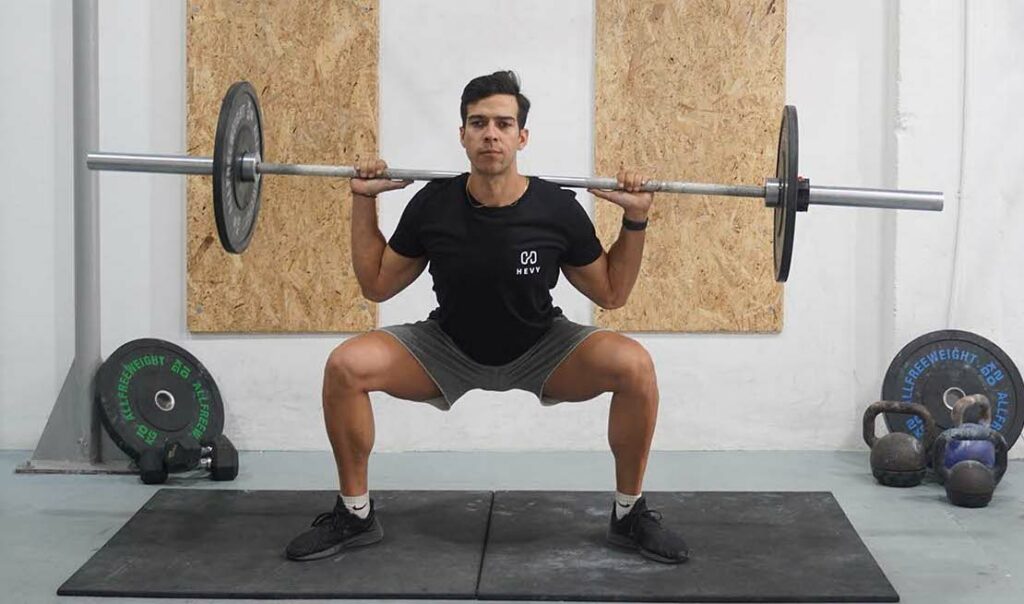

Sumo deadlifts are one of the best compound glute exercises.
The objective is to pick up a loaded barbell from the floor to hip level. But unlike a standard deadlift, where your feet are a few inches apart, you must assume a wide (sumo) stance.
Using a wider stance places more emphasis on your quadriceps and promotes glute activation, particularly near the top.
Other muscle groups worked by the sumo deadlift include the hamstrings, adductors (inner thigh muscles), back, midsection, shoulders, and arms, making the movement one of the best full-body activities (8).
6. Squat (Barbell)
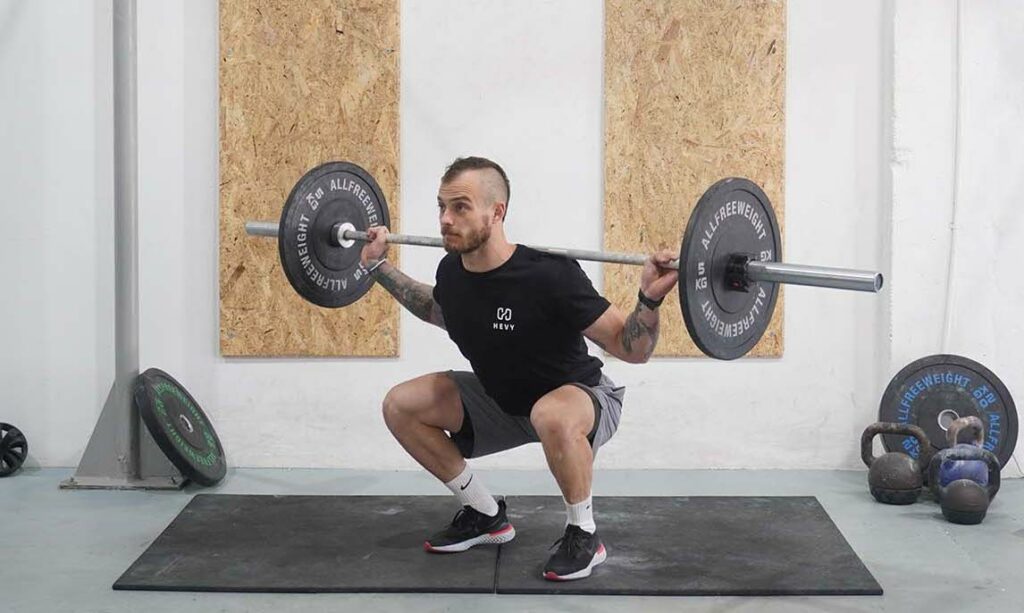

Barbell squats are another classic exercise that promotes gluteal development. But, for the activity to engage the glutes effectively, you must squat to a good depth––ideally, until your thighs are parallel to the floor or slightly lower (9).
Good depth allows the glutes to contribute more from the bottom and remain active to the top of each repetition.
The objective is to place a barbell on your upper trapezius, support it with your arms, and squat.
Using a low-bar position, where the barbell is a couple of inches lower on your back, forces your posterior chain muscles to work extra hard in producing hip extension.
7. Single Leg Romanian Deadlift (Barbell, Dumbbell)
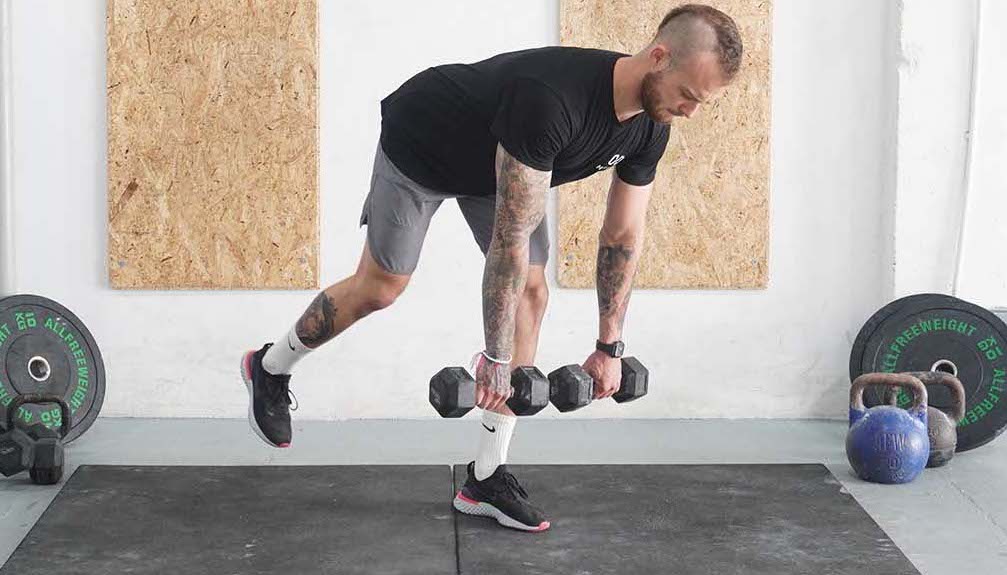

Like classic Romanian deadlifts, the single-leg versions are excellent for developing your entire posterior chain.
A notable advantage of the single-leg version is that you can more effectively target both sides of your body and improve muscle activation.
Additionally, supporting yourself on one foot at a time is excellent for strengthening your ankles and improving stability.
8. Bulgarian Split Squat
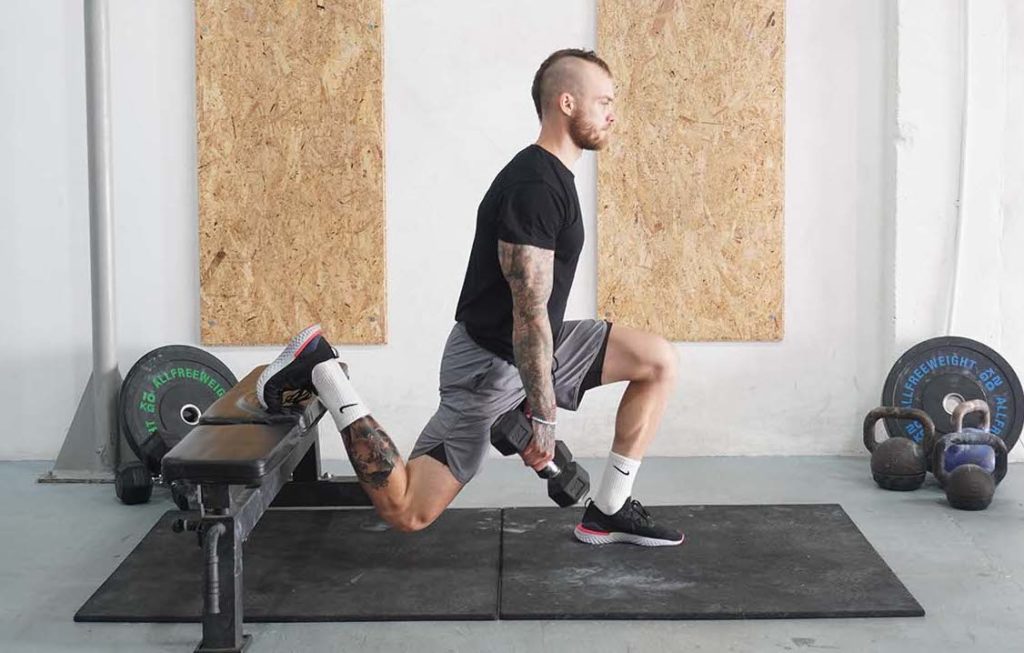

Bulgarian split squats are a compound exercise primarily known as a quad-builder, but they are also excellent for the hamstrings and glutes.
The objective is to elevate your rear leg on a gym bench, chair, or plyometric box and plant your front foot on the floor. Once in position, straighten your torso, inhale, and descend into a squat by bending your front knee.
Research suggests that a longer stride, where the front shin is vertical, is more beneficial for recruiting the glutes and hamstrings (10). In contrast, a shorter stride, where the knee is in front of the toes, makes the exercise more knee and quadricep-dominant.
9. Frog Jumps
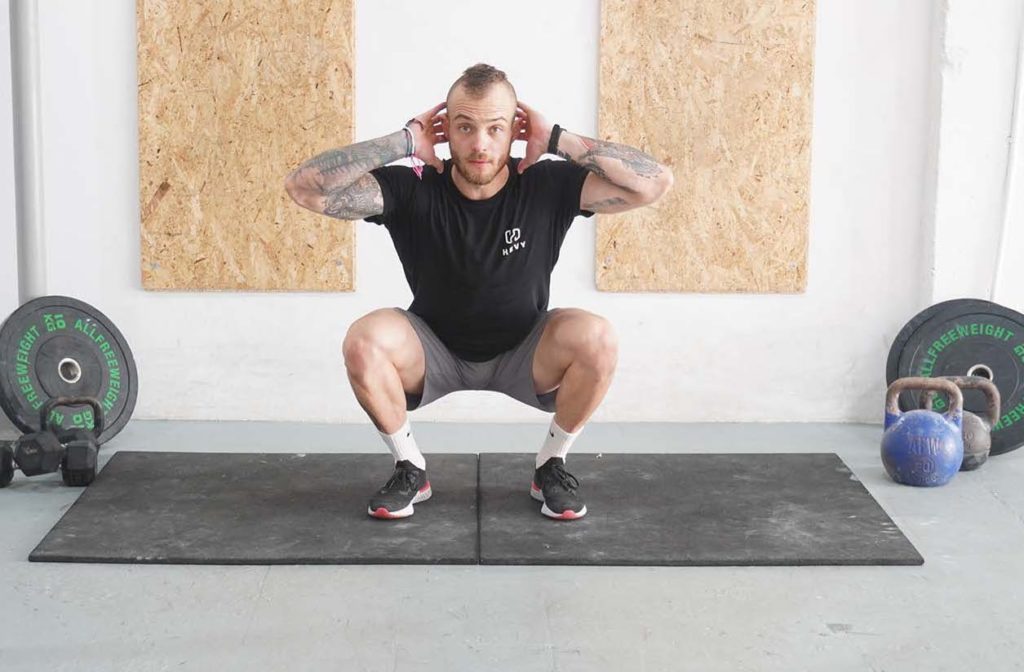

Frog jumps are among the most dynamic compound movements for the gluteus maximus.
The objective is to have your feet hip-width apart or slightly wider and stand tall. Extend your arms and position them in front of your body. Have your back straight, inhale and slowly bend your knees until your fingertips brush the floor. Press through your heels and jump in the air.
Frog jumps are great for finishing a glute workout. You can do high-rep sets with minimal rest in between.







Hevy – Workout Tracker







Hevy – Workout Tracker
Create your glute workout with Hevy, and track your progress
List of 5 Isolation Glute Exercises
1. Glute Kickback (Machine)
Glute kickbacks are one of the simplest movement patterns for the lower body. It emphasizes the gluteus medius, maximus, and minimus, involving only the hip joint.
Set yourself up on a machine with a pad against your Achilles tendon or the rear of your knee. Once you’ve assumed the starting position, take a breath and extend your leg back, squeezing your glutes.
2. Lateral Leg Raises
Lateral leg raises are one of the best glute exercises you can do at home. Raising your leg to the side engages the glute medius, adding muscle mass to the upper buttocks region.
Assume the starting position by standing tall and having your feet together. Inhale and raise one leg laterally in one fluid motion while supporting yourself on the opposite foot. Feel free to hold onto something for balance.
You can make the lateral leg raise more challenging by using ankle weights. The movement works great for warming up the hip region or finishing a glute workout.
Related article: Develop a Shelf Butt: 2 Upper Glute Workouts and 10 Upper Glute Exercises
3. Clam Shells
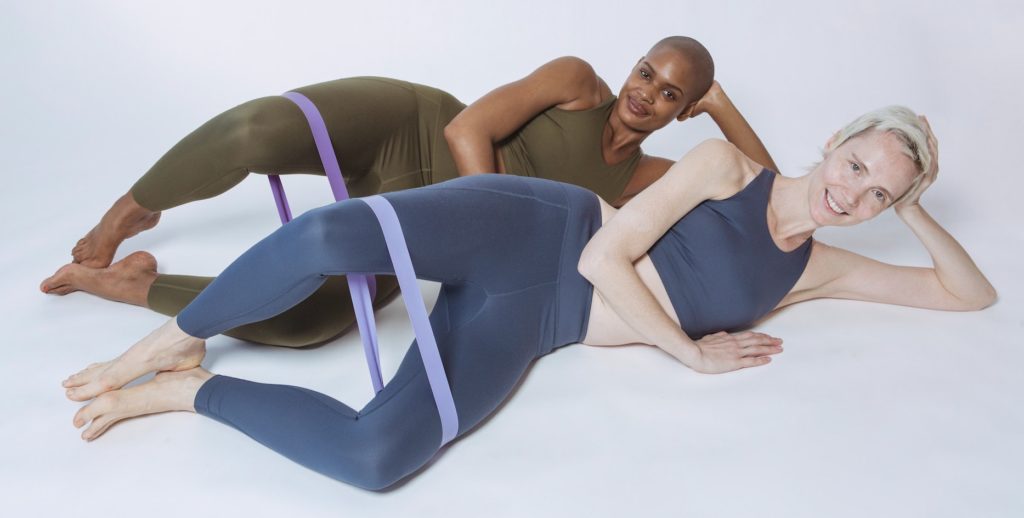

Clam shells are among the simplest and most effective glute exercises. Specifically, the movement targets the gluteus medius, which produces hip abduction.
To perform these, lie on your side, have one leg on top of the other, and bring your feet together. Inhale and lift your top knee in one fluid motion while keeping your feet together.
The clamshell is a good beginner exercise because it is easy to learn and requires no equipment.
4. Standing Cable Glute Kickback
Standing cable glute kickbacks are similar to the first movement on the list. The primary difference is that you use cables instead of a glute kickback machine.
To perform these, set the pulley in the lowest position, attach an ankle strap, and select the correct load. Attach the strap to one ankle, stand tall, and take a step back. Inhale and extend your leg back in one fluid motion, squeezing your buttocks.
5. Hip Abduction (Machine)
Hip abduction on a machine is a great way to develop the outer portion of your thighs and the upper buttocks.
The objective is to sit down on a machine with the outer portion of your thighs against the pads. Once in position, brace your body, take a breath, and spread your legs.
A notable benefit of the movement is that you can control the resistance to fit your strength level and train in various repetition ranges.
Final Words
Building a head-turning behind isn’t that complex, but it isn’t as simple as, “Just do your squats.”
As you can see, there is a lot of information regarding programming, exercise selection, and designing individual workouts. Plus, there are plenty of isolation and compound exercises to try.







Hevy – Workout Tracker







Hevy – Workout Tracker
Create your glute workout with Hevy, and track your progress
Find more isolation and compound glute exercises in the exercise library on the Hevy Weightlifting Tracker.
Other articles from the series:
- The Top 7 Isolation And 7 Compound Ab Exercises
- 10 Compound and 4 Isolation Back Exercises for an Impressive V-Taper
- 8 Isolation and 7 Compound Bicep Exercises For Big Arms
- 8 Compound and 6 Isolation Chest Exercises for Strong Pecs
- 7 Isolation and 8 Compound Leg Exercises for a Strong Lower Body
- 8 Isolation and 9 Compound Shoulder Exercises
- 7 Isolation and 7 Compound Tricep Exercises For Big Arms


